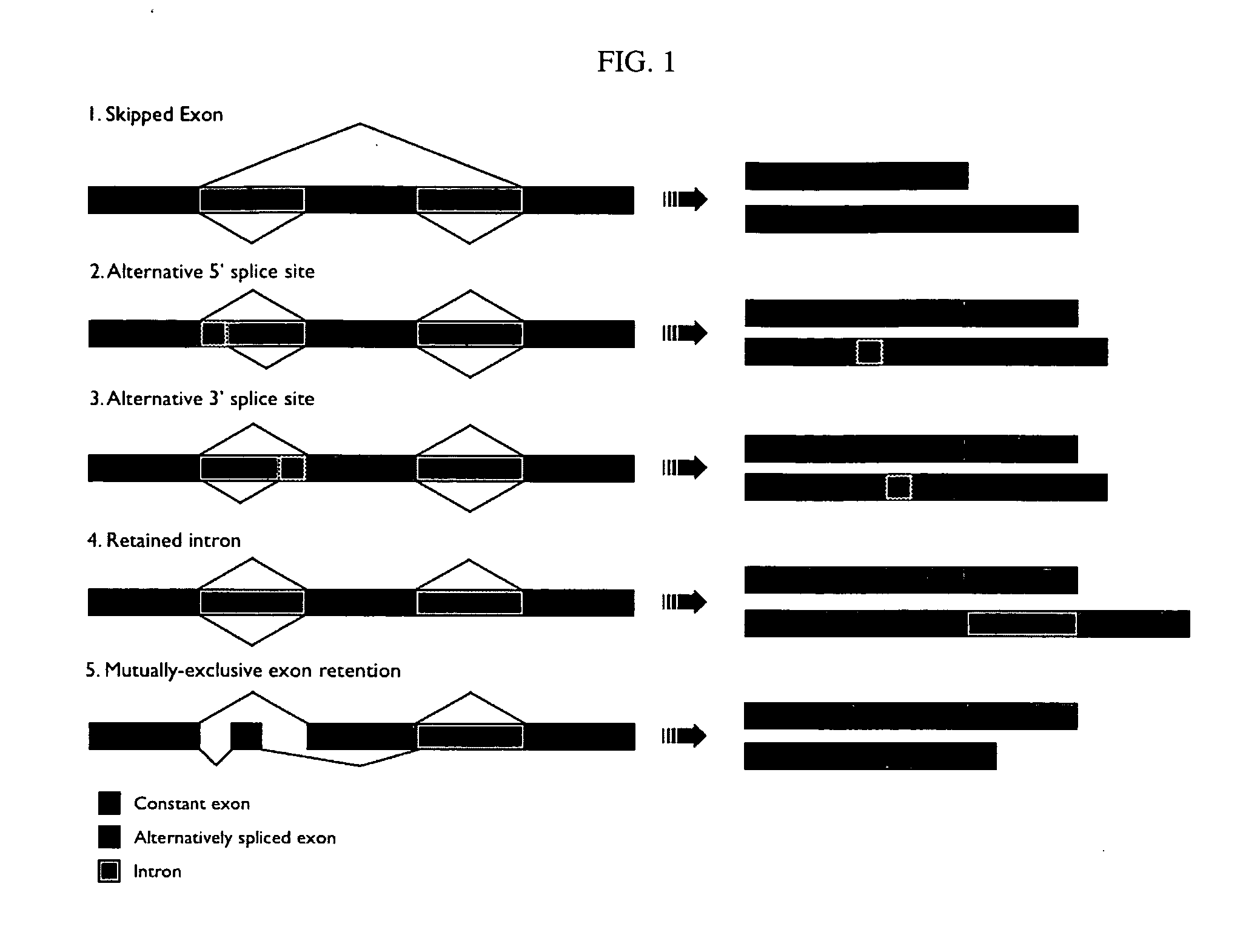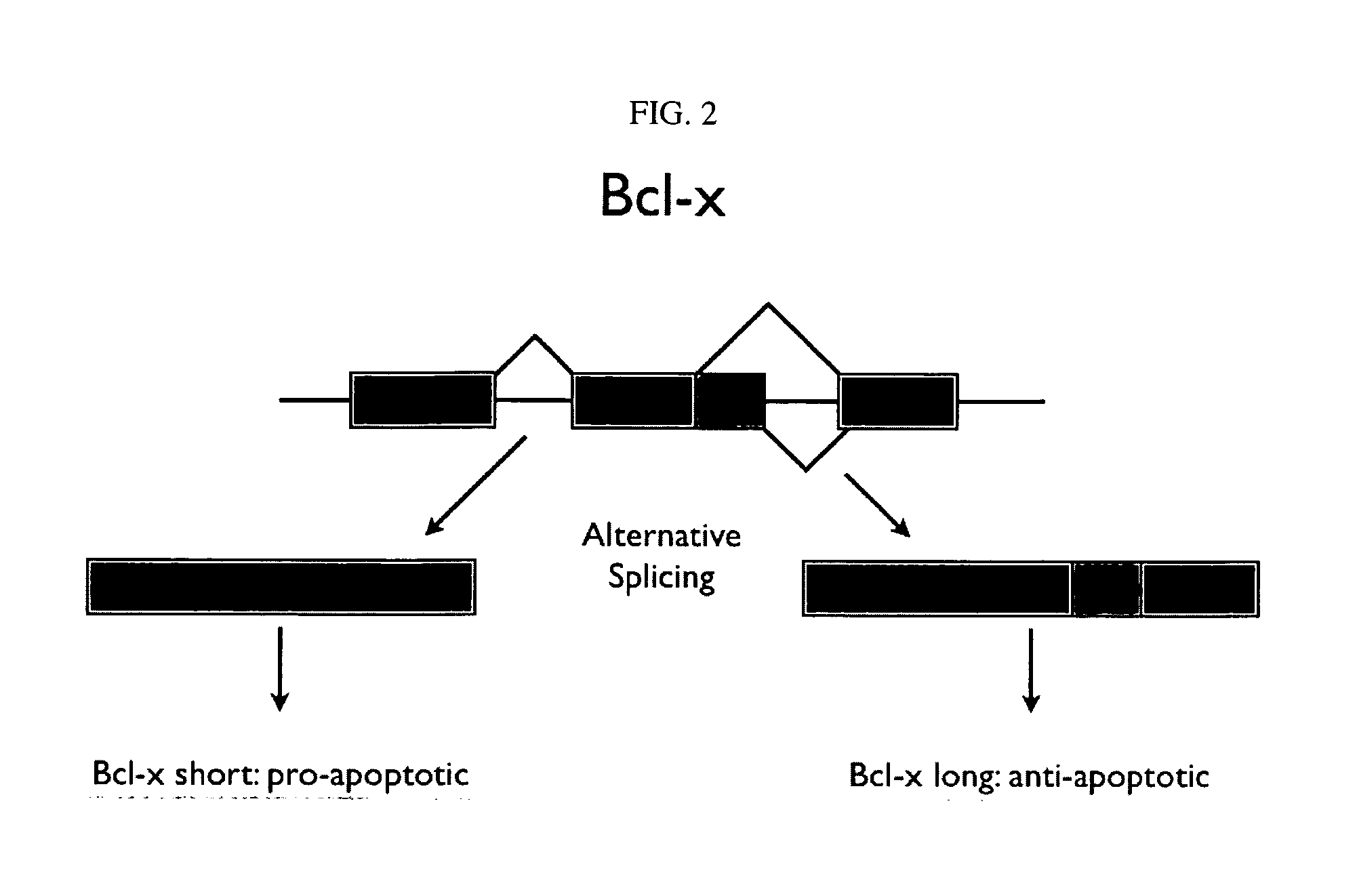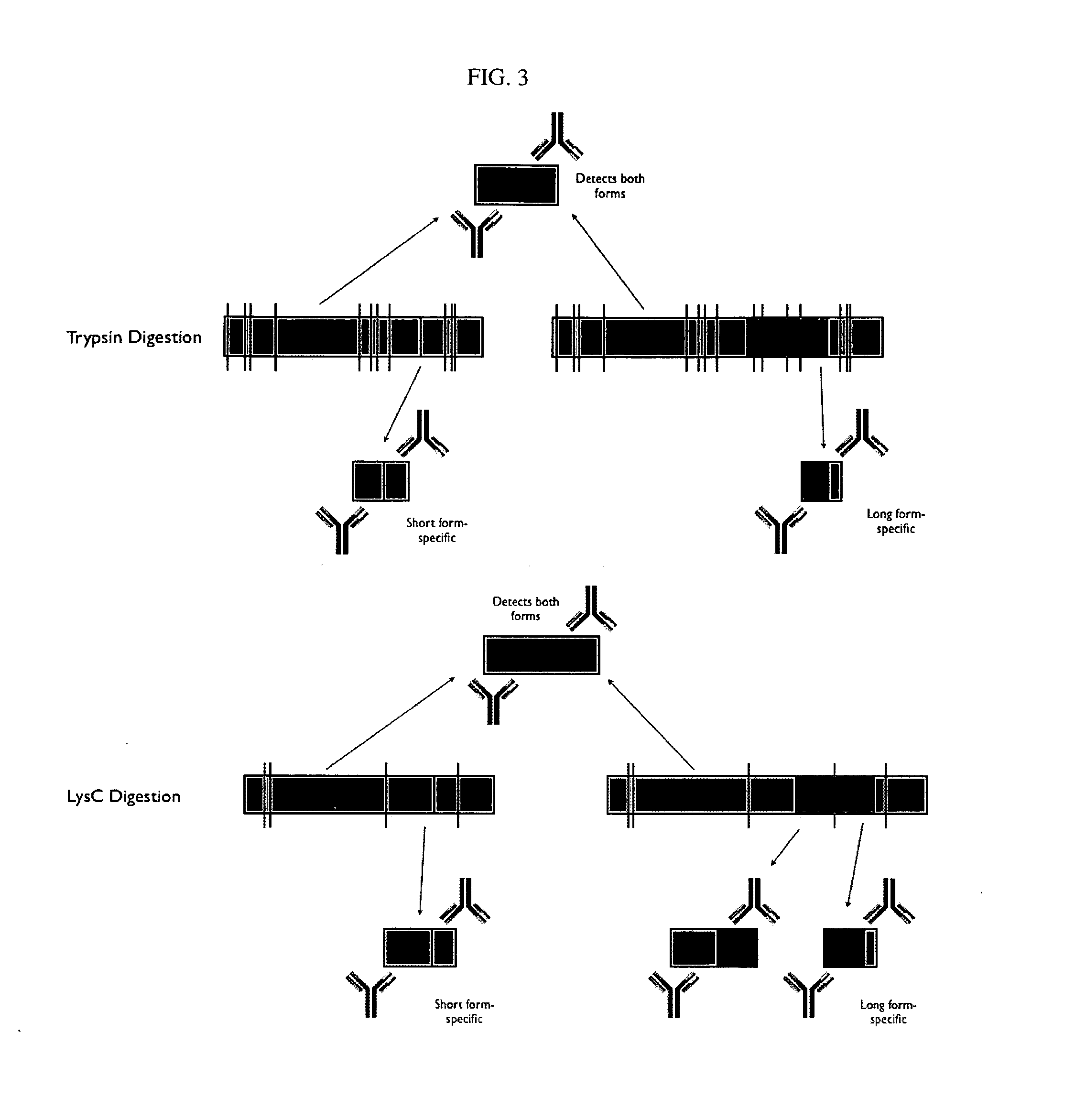Protein splice variant / isoform discrimination and quantitative measurements thereof
a technology of isoform discrimination and protein splice variant, applied in the field of protein splice variant/isoform discrimination and quantitative measurement thereof, to achieve the effect of reducing sample complexity and reliable digestion of proteins
- Summary
- Abstract
- Description
- Claims
- Application Information
AI Technical Summary
Benefits of technology
Problems solved by technology
Method used
Image
Examples
example 1
Bcl-x Isoform Detection
[0288] Two forms of the protein Bcl-x (isoform 1: NP—612815; isoform 2: NP—001182) have been identified and are shown below in schematic representation (see FIGS. 2 and 3) and in sequence alignment (FIG. 4). Bcl-x is a member of the Bcl-2 family of apoptotic factors. Alternative splicing of Bcl-x results in two isoforms that have opposing apoptotic activities. The Bcl-x long isoform is anti-apoptotic, while the Bcl-x isoform is pro-apoptotic. Also shown in the schematic are protease cleavage sites and the resulting protein fragments for both trypsin and Lys C digestion, respectively. A protein fragment is selected for each of the two protein isoforms that is unique to that form. As can be seen in the figures, both trypsin and lysC digestion results in the creation of at least one proteolytic fragment unique to each isoform and one that is common to both. Using established PET (peptide epitope tag) picking algorithms, 8-mer PET sequences were identified for ea...
example 2
CD44 Isoform Detection
[0290] For some isoform families (especially ones that incorporate many variable exons), it may not be as straightforward as the case described above to uniquely discriminate among all isoforms (should all or several isoforms be present in a given sample). In more complicated cases, isoforms will fall into groups that share common peptide fragments. A good example of this application is the CD44 isoform family.
[0291] CD44 is a cell surface receptor with a variety of roles in cell adhesion, lymphocyte activation, cell-cell and cell-extracellular matrix interactions, and tumor growth and progression. The CD44 gene consists of 20 exons, the central ten of which are subject to alternative splicing (designated by a number followed by “v” for “variable”); exons 1-5 and 16-20 are invariant and occur in all known isoforms. While only a dozen or so CD44 isoforms have been identified, alternative splicing of CD44 has the potential to produce hundreds of isoforms. Of th...
example 4
Exemplary Sample Preparation
[0315] Samples for the methods of the invention may be prepared according to any of the methods described herein. This example provides a specific preparation method that is preferred for certain embodiments, such as the sandwich immunoassay. However, it should be understand that it is by no means limiting.
[0316] A typical sample was prepared in 5 mM TCEP (Tris(2-Carboxyethyl)Phosphine), 0.05% (w / v) SDS, and approximately 20 mM triethanolamine, pH 8.5. The mixture was heated at about 100° C. for about 5 minutes, and then allowed to cool back to room temperature (about 25° C.). Iodoacetamide was then added to a concentration of about 10 mM, and the sample was alkylated for about 30 minutes at room temperature (usually in the dark). Then about 1 / 20 (w / w) trypsin relative to the amount of protein in the sample was added (e.g., if the total protein concentration was about 1 mg / ml, add 0.05 mg / ml trypsin). Digestion was allowed to proceed for between 2 hours...
PUM
| Property | Measurement | Unit |
|---|---|---|
| pH | aaaaa | aaaaa |
| temperatures | aaaaa | aaaaa |
| concentration | aaaaa | aaaaa |
Abstract
Description
Claims
Application Information
 Login to View More
Login to View More - R&D
- Intellectual Property
- Life Sciences
- Materials
- Tech Scout
- Unparalleled Data Quality
- Higher Quality Content
- 60% Fewer Hallucinations
Browse by: Latest US Patents, China's latest patents, Technical Efficacy Thesaurus, Application Domain, Technology Topic, Popular Technical Reports.
© 2025 PatSnap. All rights reserved.Legal|Privacy policy|Modern Slavery Act Transparency Statement|Sitemap|About US| Contact US: help@patsnap.com



